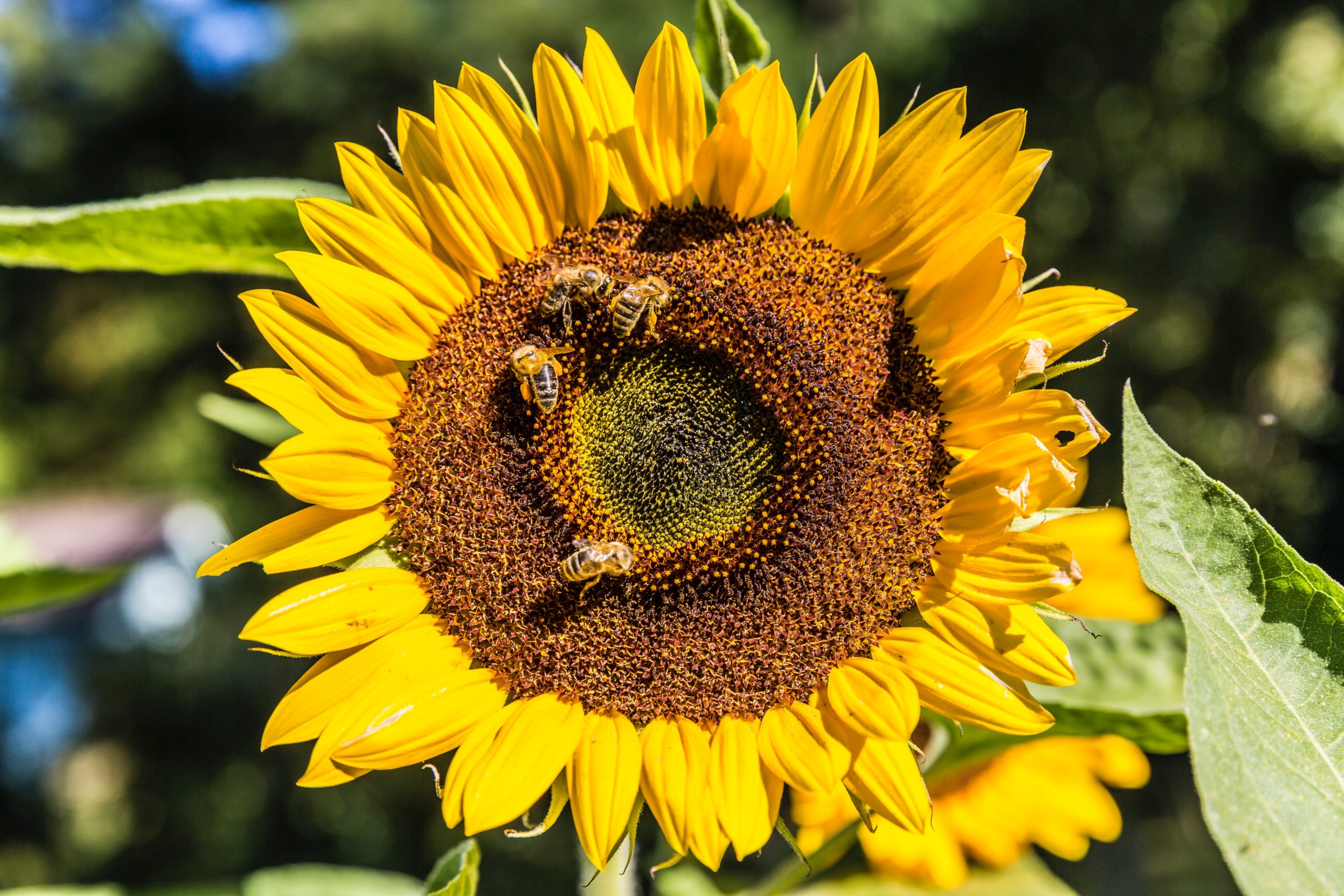Planning your spring garden? Don’t forget to include bee foraging plants!
By strategically planting certain flowers, bushes, herbs, and trees on your homestead this upcoming spring growing season, you can help attract the buzzing and bumbling bees to your homestead.
These plants are the bees’ knees when it comes to attracting bees to your garden.
BEE BALM
You guess it—bee balm does attract bees. This flower will add beautiful color to your garden and attract butterflies, too!
Make sure that all chances of frost have passed before planting bee balm.
Read more about growing bee balm here.
SUNFLOWERS
What’s a stunning sunflower bloom without a bee or two buzzing about? Sunflowers are the quintessential late summer flower, and some of our favorite to grow here at Stoney Creek Farm. Seeing those bright blooms in my garden each summer brings me such joy—and benefits our Summer U-Pick Garden.
Read more about growing sunflowers here.
LAVENDER
What’s lovelier than the sweet smells of lavender wafting through the air? Lavender is a perennial that loves full sun and rocky, well-draining soil. And pollinators like bees and butterflies love it, too. We don’t grow lavender in our own garden because our soil is clay-based, and we would need to amend it before planting lavender.
Read more about growing lavender here.
BUCKWHEAT
Growing tomatoes this summer? Buckwheat is a great companion plant! It will attract both pollinators AND other beneficial insects that prey on one of the tomatoe’s arch nemeses: aphids. Buckwheat doesn’t do well in dreadfully dry and hot conditions, but has been known to yield moderate crop even in a southern state like Tennessee. We grow whole rows of buckwheat throughout our garden to bring in and keep pollinators during our Summer U-Pick Garden.
Read more about growing buckwheat here.
CRIMSON CLOVER
While we use crimson clover primarily as a cover crop in the winter, it also serves as a great pollinator-attractor. The deep red blooms are gorgeous.
Read more about growing crimson clover here.
TULIP POPLAR
The tulip poplar is a leafy deciduous tree found in the eastern U.S. It is the state tree of Tennessee, Kentucky, and Indiana. It enjoys full sun and rich soil.
Read more about the tulip poplar here.
CHIVES
Chives, a member of the onion family, also impress with lovely purple flowers. But watch out—these are aggressive and can take over your garden if you let it!
Learn more about growing chives here.
MINT
Mint is an excellent option for your herb additions. Mint is a perennial that will thrive in just about any garden across the U.S. It’s hard to go wrong with this one! Plus, adding fresh mint leaves to your homemade ice cream is a sweet treat that makes a slow summer night all the better.
Keep in mind that mint needs a barrier around it, because it’s very invasive and will TAKE OVER your herb garden… as it has ours.
Learn more about growing mint here.
OREGANO
Bees love fragrant oregano just as much as we do. Cook with fresh herbs all while making the bees—and your garden—happy.
Learn more about growing oregano here.
ROSEMARY
Rosemary is an aromatic evergreen shrub that is a common staple in the kitchen. When grown in ideal conditions, it can easily go crazy—you’ll need to manage it well so it doesn’t take over your entire garden. It grows well outdoors in Zones 7 and warmer. In colder climates, it will need to be grown in pots and brought in during the cold winters.
Learn more about growing rosemary here.
SAGE
Sage—another common kitchen staple. Keep in mind when choosing your sage though that not all sage types are of the culinary variety. Salvia officinalis is the most popular variety used to cook with. Sage is typically quite hardy.
Learn more about growing sage here.
THYME
Thyme is a good time for pollinators like bees. While thyme can be difficult to grow from seed, it is a drought-resistant, hardy herb. The culinary variety makes for tasty additions to dishes.
Learn more about growing thyme here.
MORE BEE-FORAGING PLANTS
This list only begins to scratch the surface for great bee-foraging plants. This resource from Spikenard Farms provides additional suggestions for bee-foraging plants.
***
Looking for more growing guidance for your garden? You’ve come to the right place!


